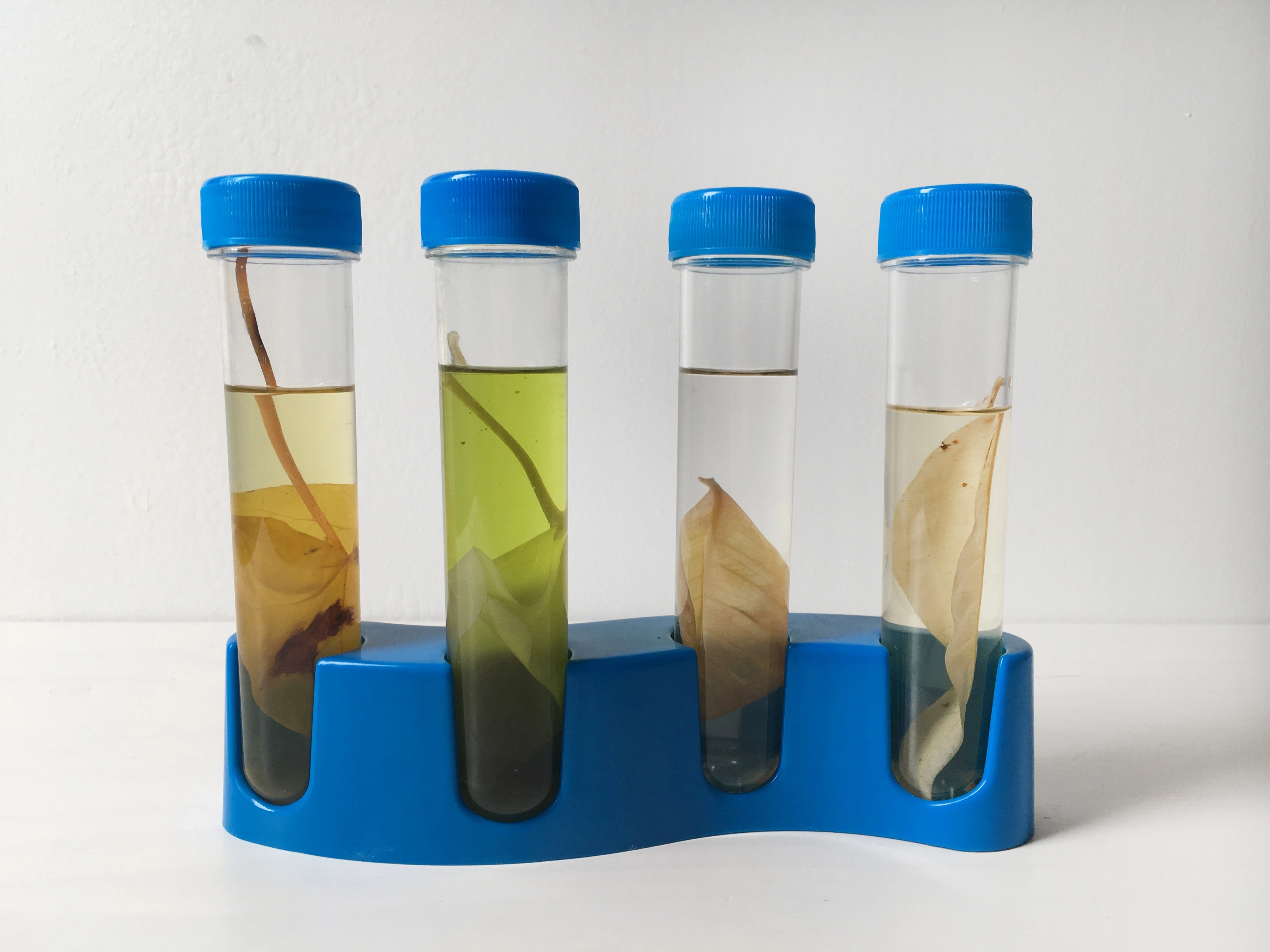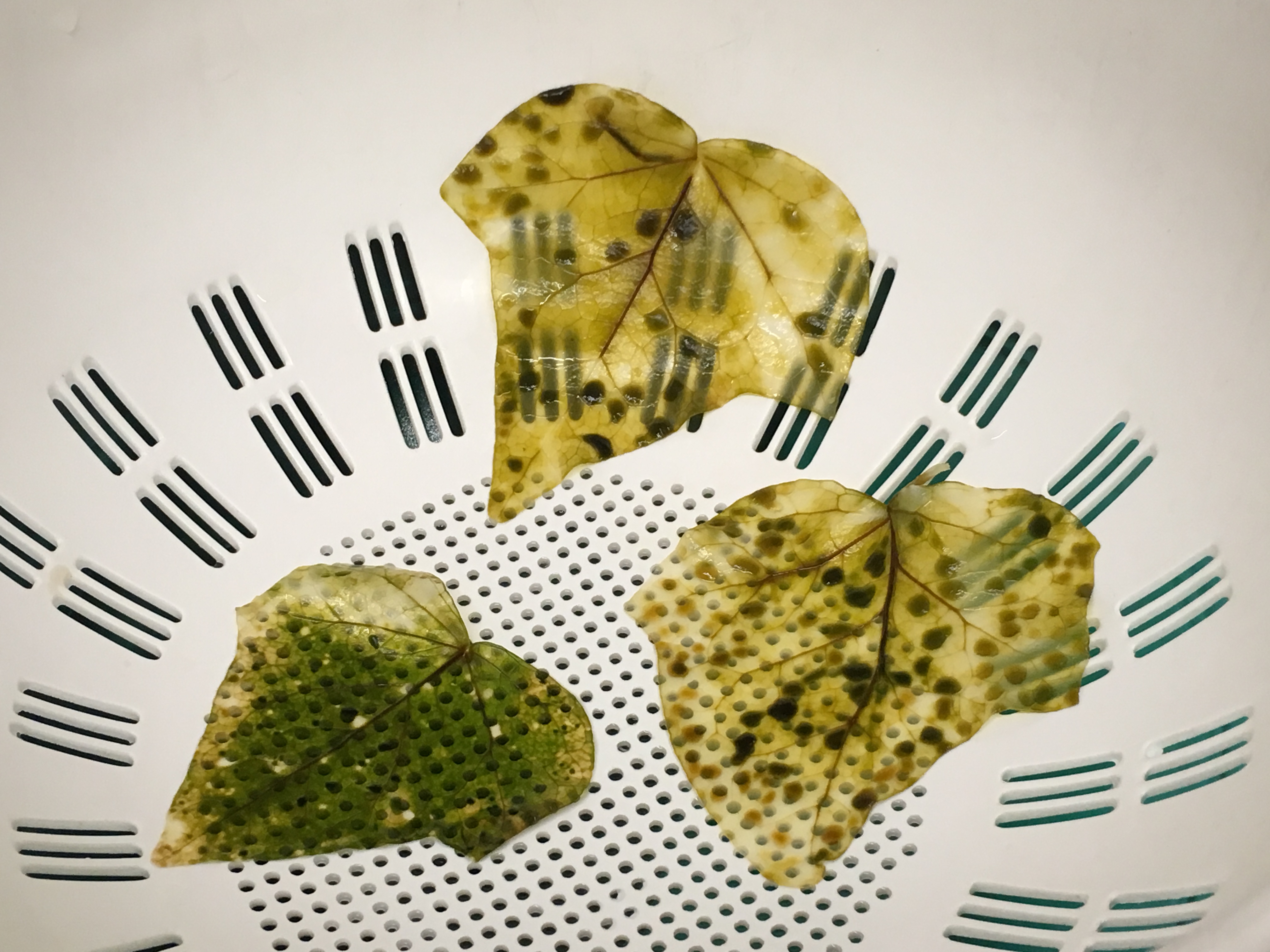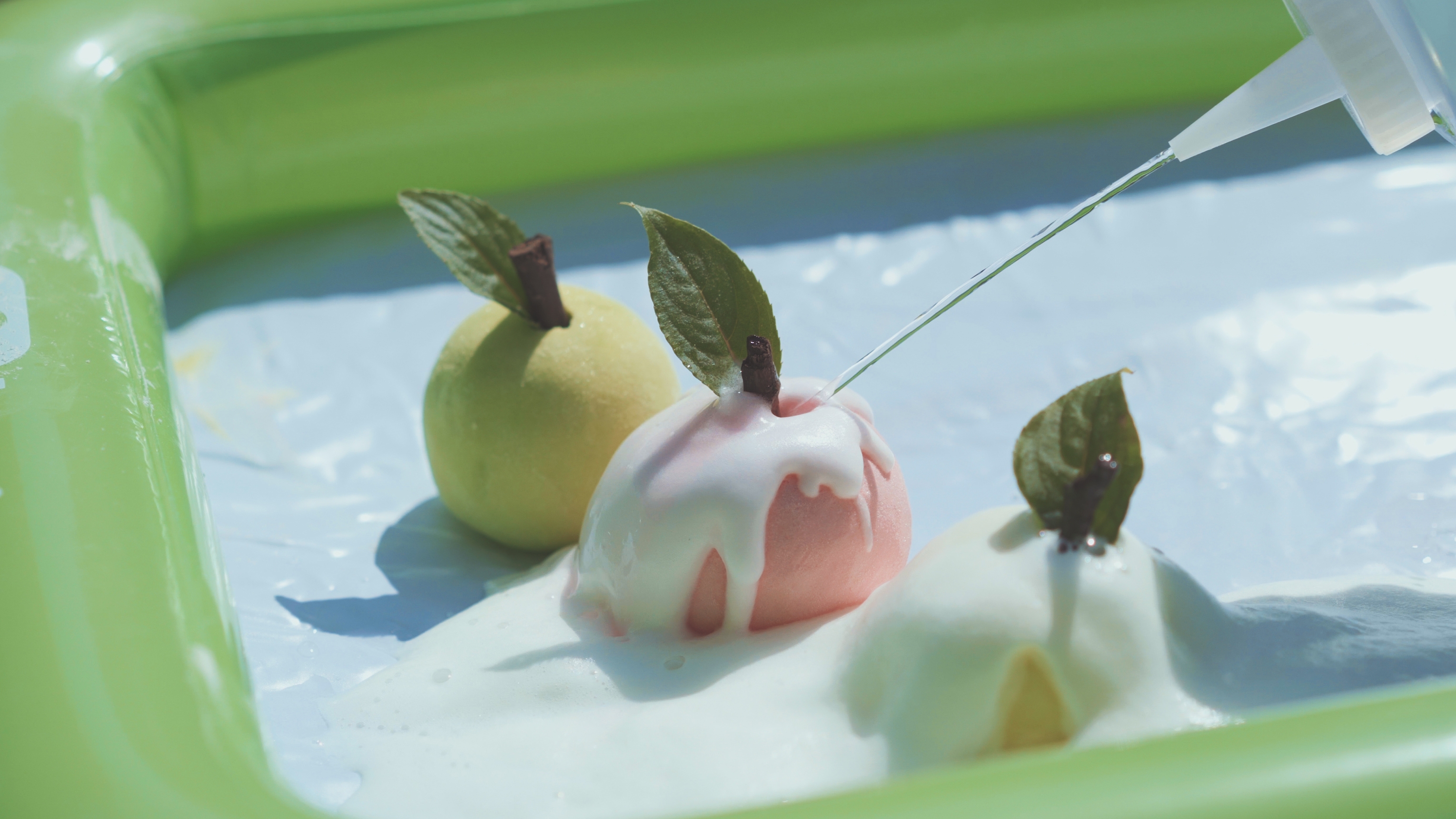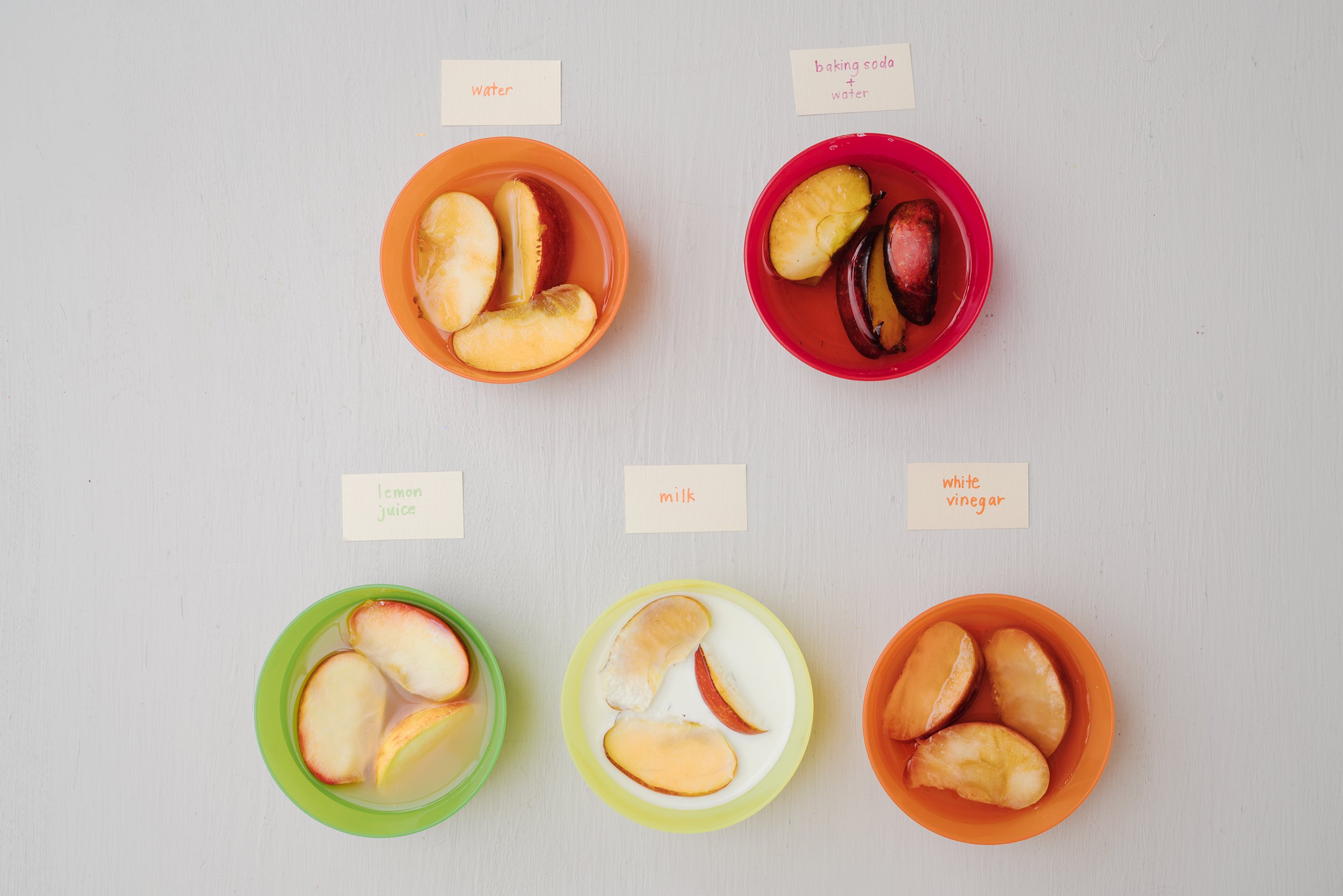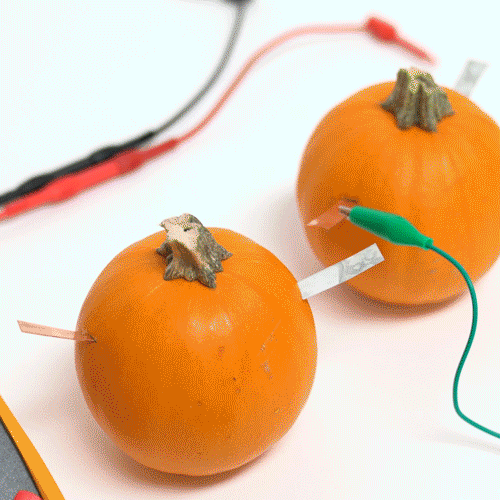- Chlorophyll Colors
(Ages 3-6)
Fall is full of color, and this experiment helps bottle it up! Leaves are full of chlorophyll which works to convert the energy of the sun into food for the plant. Chlorophyll also makes leaves appear green. In the fall the chlorophyll in leaves starts to break down and their green hue changes to yellow, orange, or red. By boiling leaves and submerging them in alcohol, you can separate the colors and capture a fall-themed rainbow in liquid form. You can start this project with a nature walk with your kids to collect colorful leaves!
- Skeleton Leaves
(Ages 12-16)
With every leaf that falls, a different experiment awaits! Similar to humans and animals, leaves are made up of a system of veins that transport food and water to its cells. When leaves hit the ground, the decomposition process starts. You can speed up and simulate this process at home to reveal a series of skeletons! While you do this simple science experiment, you can talk to your kids about the anatomy of a leaf and its similarities to our own vein systems!
- Erupting Apples
(Ages 3-8)
This experiment makes for a super sensory experience! Surprisingly, no apples are actually needed for this project. Instead, tour kids will make their own “apples” with baking soda, soap, and water. Then, you just have to add vinegar to create an explosion of fizzy bubbles! While you do this project, talk to your kids about the causes of this chemical reaction.
- Acidic Apples
(Ages 5-11)
If you have an apple orchard nearby, kick this project off with a field trip! When apples are cut, an enzyme (polyphenol oxidase), that reacts with oxygen, is released–causing the apple slices to turn brown. In this experiment, you and your kids are going to test out different liquids to see which one keeps the apple slices from browning. If you have an apple orchard nearby, you can kick this project off with a field trip!
Like lemons, pumpkins have acidic juices that help transport electrical energy! Put your pumpkin’s power to the test by combining copper, zinc, and electrical wire. The flow of electrical energy starts by dissolving charged ions of zinc off of the zinc metal. The zinc ions leave behind extra electrons in the zinc metal which travel over to the copper through the wire. That movement of electrons creates electricity!
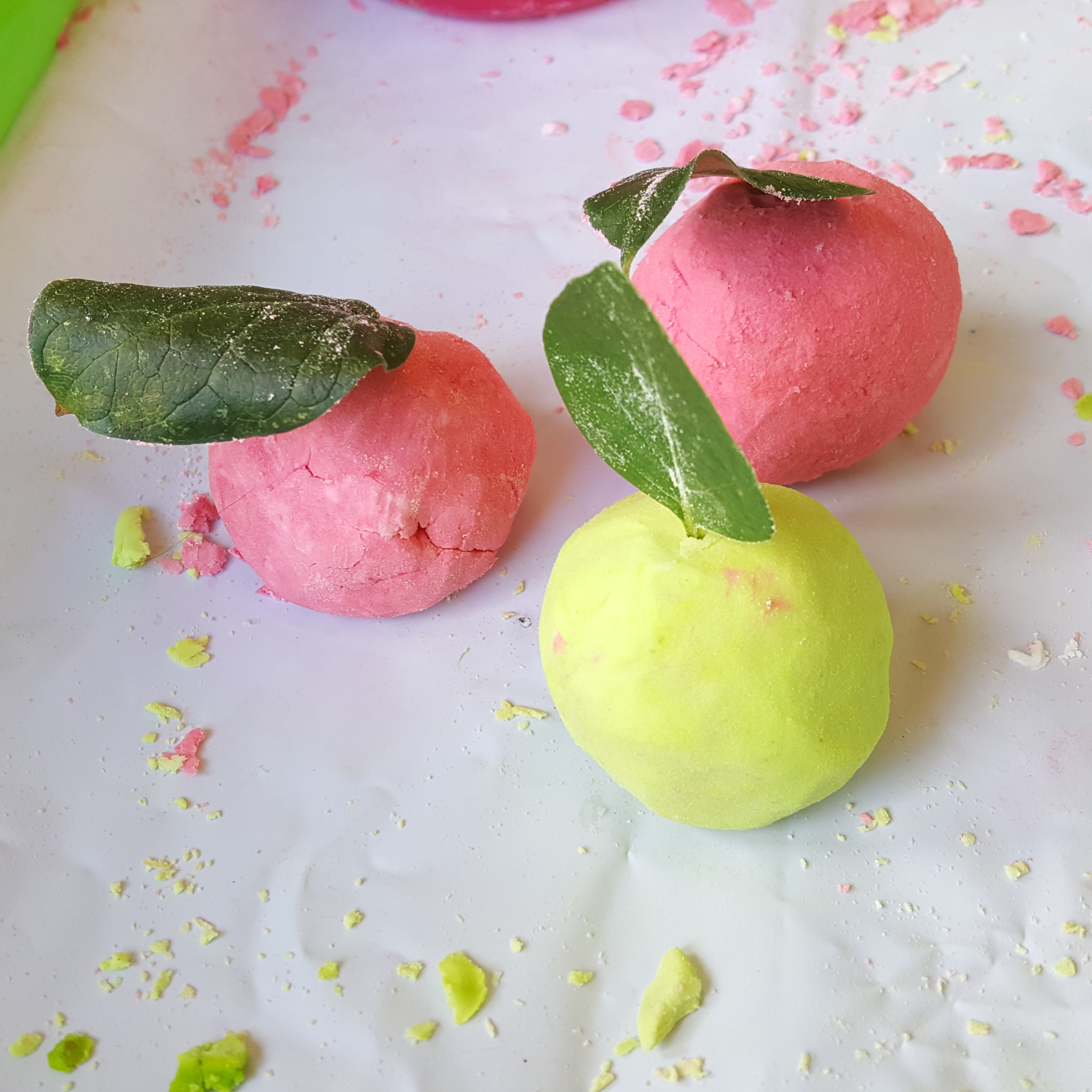
5 Science Projects to Celebrate Fall
Fall is the season of pumpkin spice and cozy nights, but it’s also the season of science! From chlorophyll to chemical reactions, the wonder of the world is unfolding all around us. KiwiCo founder and CEO, Sandra, walked through her favorite fall experiments live on KTLA, so now we’re sharing them with you! Try out one, two, or all of these projects with your kids to celebrate the season with science.
